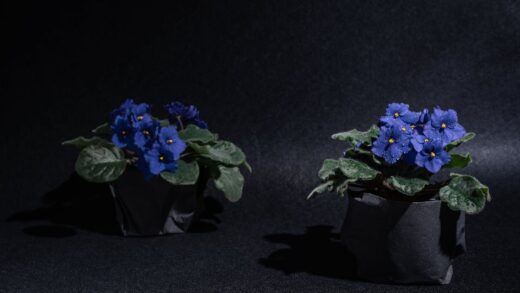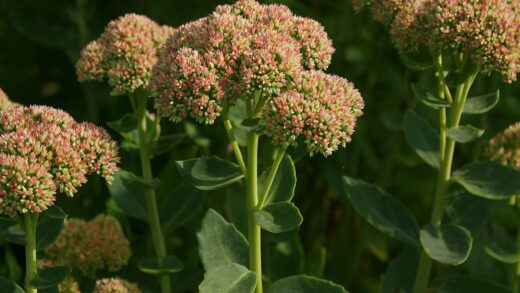The successful wintering of gladiolus is a critical procedure in climates where winter temperatures drop below freezing, as the corms are not hardy and will not survive in frozen ground. This process involves more than simply digging the corms out of the soil; it is a careful sequence of steps designed to prepare the corms for a period of dormancy and ensure they have the energy and health to thrive when replanted the following spring. Proper lifting, curing, and storage are essential for preserving your gladiolus stock from one year to the next. Mastering this autumnal ritual is key to enjoying these spectacular flowers as a permanent feature in the garden.
The process of wintering begins in the late autumn, after the plants have finished their growth cycle for the year. The timing of when to lift the corms is important for maximizing the energy stored within them. It is generally recommended to wait until after the first light frost of the season. This frost will kill the top foliage of the plant, which signals the corm to enter its final stage of dormancy preparation. Allowing the corms to remain in the ground for a few weeks after the foliage has died back gives them additional time to mature and harden off, making them better suited for storage.
Lifting the corms from the ground must be done with care to avoid injury. A spading fork or a shovel should be used to loosen the soil in a wide circle around the plant’s base, taking care not to pierce the corms themselves. Once the soil is loosened, the entire plant can be gently lifted from the ground. It is best to leave the soil that clings to the corms and roots for the time being. This careful extraction process is the first physical step in ensuring the corms begin their journey into storage in the best possible condition, free from nicks and bruises that could become entry points for rot.
Immediately after lifting, the initial preparation for storage begins. The stems and foliage should be cut back, leaving a short stub of about 2 to 5 centimeters attached to the corm. This makes the corms easier to handle and removes the decaying leaf matter. The corms should not be washed at this stage. Instead, they should be moved to a protected location to begin the crucial curing process, which is essential for healing any minor damage and for developing a protective skin that will guard them against moisture loss and disease during their long winter rest.
Timing the harvest of corms
Determining the precise time to harvest gladiolus corms for winter storage is a crucial decision that significantly impacts their long-term viability. Lifting them too early can mean the corms have not had sufficient time to mature and store the maximum amount of energy needed for the next season’s growth. Lifting them too late, after the ground has frozen solid, can damage the corms or make their extraction impossible. Therefore, a grower must observe the plant and the weather to find the optimal window for this important task.
More articles on this topic
The general rule of thumb is to wait about six to eight weeks after the last flower has faded, or until the foliage has been killed back by the first light frost. The yellowing and browning of the leaves is a natural sign that the plant has finished photosynthesizing and has transferred its energy reserves down into the new corm. Leaving the corms in the ground for this period allows them to fully mature and for the cormels, the small baby corms, to develop at the base. This maturation process is vital for the health and vigor of the corm.
Weather conditions are a primary consideration. The goal is to lift the corms from the soil when it is relatively dry. Digging in wet, muddy soil is not only more difficult, but it also coats the corms in a thick layer of mud that can hinder the curing process and promote rot. It is advisable to monitor the weather forecast and plan the harvest for a period of dry days. It is absolutely essential to complete the harvest before the first hard freeze, as a hard freeze can penetrate several inches into the soil and damage the tender corm tissue, rendering it useless.
In very mild climates where the ground rarely freezes, some gardeners may choose to leave the corms in the ground over winter, treating them as perennials. However, this can lead to a buildup of pests and diseases, like thrips and Fusarium, in the soil and on the corms. Even in these milder zones, many experienced growers still recommend lifting the corms every year or two. This practice allows for the inspection and selection of the healthiest corms, the removal of diseased ones, and the opportunity to amend the soil and rotate the planting location, leading to better long-term plant health.
The curing process
The curing process is arguably the most critical step in preparing gladiolus corms for successful winter storage. This is a period of drying and hardening that heals minor wounds sustained during digging, sets the skin to prevent moisture loss during storage, and helps to reduce the incidence of fungal and bacterial rots. Bypassing or rushing this stage is a common mistake that can lead to a significant loss of corms over the winter. Proper curing requires the right combination of temperature, air circulation, and time.
More articles on this topic
Immediately after the corms are lifted and the tops are trimmed, they should be moved to a warm, dry, and well-ventilated location. A garage, a covered porch, or a garden shed can be suitable, as long as it is protected from rain and frost. The corms should be spread out in a single layer on screens, mesh-bottomed trays, or in onion bags. It is important that air can circulate freely around each corm, so they should not be piled on top of each other. Good air circulation is key to wicking away moisture and preventing the growth of mold.
The ideal temperature for curing is between 20°C and 27°C. This warmth encourages the rapid formation of a protective, suberized layer over any cuts or bruises and helps to dry the outer layers of the corm. The curing process typically takes about two to three weeks. During this time, the soil attached to the corms will dry completely and become easy to brush off. The old, withered mother corm at the base of the new corm will also shrivel and become easy to separate.
At the end of the curing period, the corms are ready for the final cleaning before storage. The dry soil can be gently brushed away with a soft brush or by hand. The old mother corm from the previous year, which will be at the very bottom, should be carefully snapped off and discarded. The small cormels that have formed around the base of the new corm can also be separated at this time if you wish to propagate them. The resulting corm should be clean, firm, and dry, ready for its long winter dormancy.
Proper storage conditions
Once the gladiolus corms have been properly cured and cleaned, providing the correct storage conditions throughout the winter is essential for keeping them dormant and healthy until it is time to plant them again in the spring. The primary goals of storage are to prevent the corms from freezing, drying out completely, or rotting. The ideal storage environment is one that is cool, dark, and dry, with good air circulation. Any deviation from these conditions can lead to problems.
The optimal storage temperature for gladiolus corms is between 2°C and 7°C. A location that can be kept consistently within this range is ideal. An unheated basement, a root cellar, or an insulated garage are often good choices. It is crucial that the temperature does not drop below freezing, as this will kill the corms. Conversely, if the storage location is too warm, the corms may break dormancy prematurely and begin to sprout, which will deplete their energy reserves and lead to weak growth when they are planted.
Good air circulation is just as important during storage as it is during curing. The corms should be stored in containers that allow for airflow, such as mesh bags, paper bags with holes punched in them, or shallow cardboard boxes. Storing them in sealed plastic bags or containers is a mistake, as this will trap moisture and almost certainly lead to mold and rot. Placing a small fan in the storage area to run on a low setting for a few hours each day can also help to maintain air movement and prevent stagnant, moist air from settling around the corms.
It is a good practice to periodically check on the stored corms throughout the winter, perhaps once a month. This allows you to inspect for any signs of trouble. Look for any corms that are developing soft spots, mold, or signs of rot, and discard them immediately to prevent the problem from spreading to the other corms. Also, check for any signs of shriveling, which could indicate that the storage environment is too dry. If shriveling is a problem, placing the corms in a box with a slightly moist medium like peat moss or vermiculite can help, but care must be taken that the medium is not wet.
Preparing corms for replanting
As the winter draws to a close and spring approaches, the final step in the overwintering process is to prepare the stored corms for replanting in the garden. This involves a final inspection and, optionally, a pre-planting treatment to give them a healthy start and to prevent the reintroduction of pests and diseases into the garden. This preparation helps to wake the corms from their dormancy and ensures they are in the best possible condition to begin a new season of growth.
About two to four weeks before the intended planting date, the corms should be brought out of their cool storage and inspected one last time. Any corms that have become soft, moldy, or excessively shriveled during storage should be discarded. Look for corms that are firm, plump, and have a healthy appearance. At this point, you may notice that small buds or “eyes” are beginning to swell on the top of the corm, which is a good sign that it is healthy and ready to grow.
As a preventative measure against pests and diseases, particularly thrips and fungal infections, it is highly recommended to treat the corms before planting. A simple and effective method is to soak the corms in a solution of warm water and a household disinfectant, such as Lysol, or a specifically formulated fungicide/insecticide dip. A soak for several hours can help to kill any overwintering thrips or fungal spores that may be present on the corms. After soaking, the corms should be allowed to air dry completely before they are planted.
This pre-planting inspection and treatment is the final quality control step. It ensures that only the healthiest corms are planted back into the garden, reducing the likelihood of disease and pest problems during the growing season. It also provides an opportunity to organize the corms by variety and size, which can help in planning the layout of the garden bed. Once treated and dried, the corms are fully prepared to be planted out into the garden as soon as the soil has warmed and the danger of frost has passed, ready to begin the cycle anew.


















